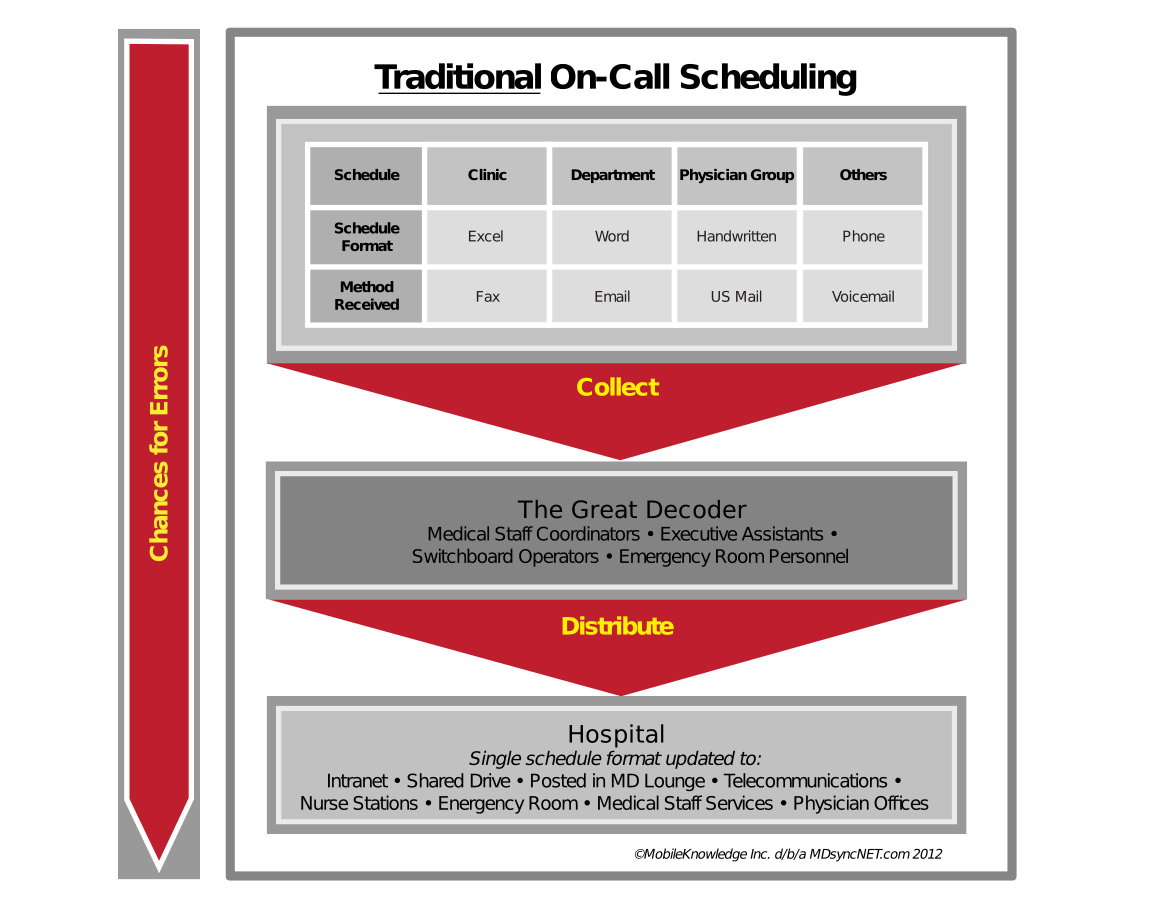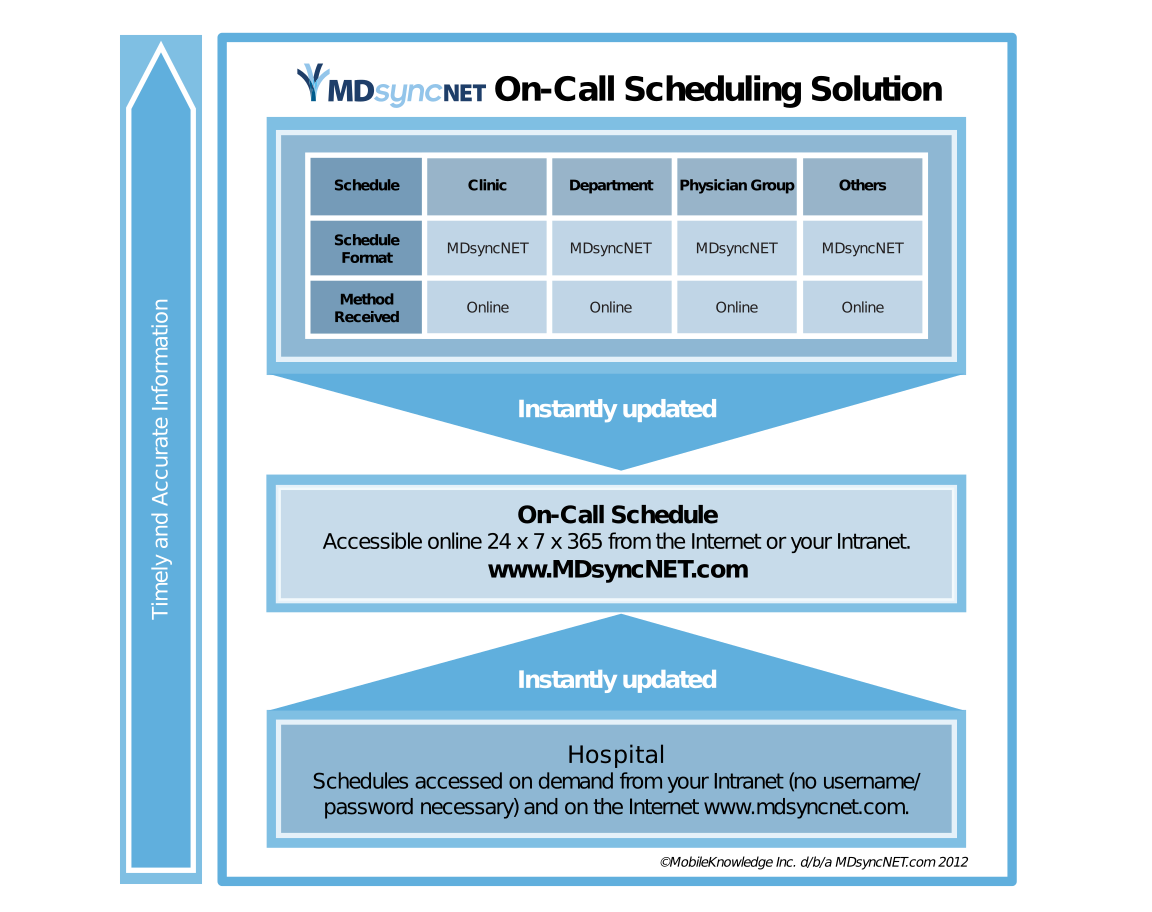Solutions

MDsyncNET’s cloud-based software reduces inefficiencies, delivers immediate results, and maximizes ROI.
WHO WE SERVE

MDsyncNET delivers right-sized software to healthcare organizations in a variety of environments.

As a medical services professional, it is your responsibility to ensure that administration and hospital employees are able to access specific information. Often, the challenge is providing this information when they need it. Accessibility is important, especially in the healthcare industry. Healthcare professionals are seeing more and more patients. So consequently, they do not have time or resources to search for information. Whether an employee needs to know who is on-call or how to contact a physician, hospital scheduling communication must be accessible and in real-time to properly serve the influx of patients.
For example, with traditional on-call scheduling, each revision, edit and last minute update goes through the “Great Decoder” -- see below. Usually one person or a limited group of people who have the task of managing the call schedules for the emergency room. This also includes hospital departments, physician groups and medical clinics. These groups send their schedules in various formats, such as a mix of emails, phone calls and faxes, which come in various methods (email, fax, voicemail, etc.). In order for the hospital to view the schedule, it needs to be converted into a single format. The single format is usually a spreadsheet. Distribution of the schedules is usually fragmented and with every schedule update, the process below restarts. The communication flow for a traditional on-call scheduling process that runs through a Great Decoder will look like this:

Switching your hospital scheduling communication methods from manual to automated seems daunting. But, with more cost effective solutions than in the past, combined with the latest technology, the transition is easier than ever.
The “Great Decoder” is constantly receiving calls about schedule changes, even when on break. With a decentralized process, employee workload is substantially reduced. This frees them up to help the entire hospital run more efficiently. Additionally, since employees are relieved from the task of tracking and updating changes, their morale tends to be higher. This gives you and your colleagues the peace of mind that when a crisis happens, the schedules will be accurate. Further, everyone will have access when they need them. With this web-based software, authorized users can access and update physician on-call schedules in real-time -- inside or outside the hospital.

There is so much in the healthcare industry that has gone from manual to automated, the next obvious step is automated on-call schedules. Switching your facility's communication methods from manual to automated will reduce stressful situations, improve patient care and more.
If you have any questions about transforming your facility’s communication methods from manual to automated, please contact us! If interested, we would like to provide you with a demo of our physician on-call scheduling software.

© 2022 All Rights Reserved. MDSYNCNET | Privacy Policy & Terms and Conditions